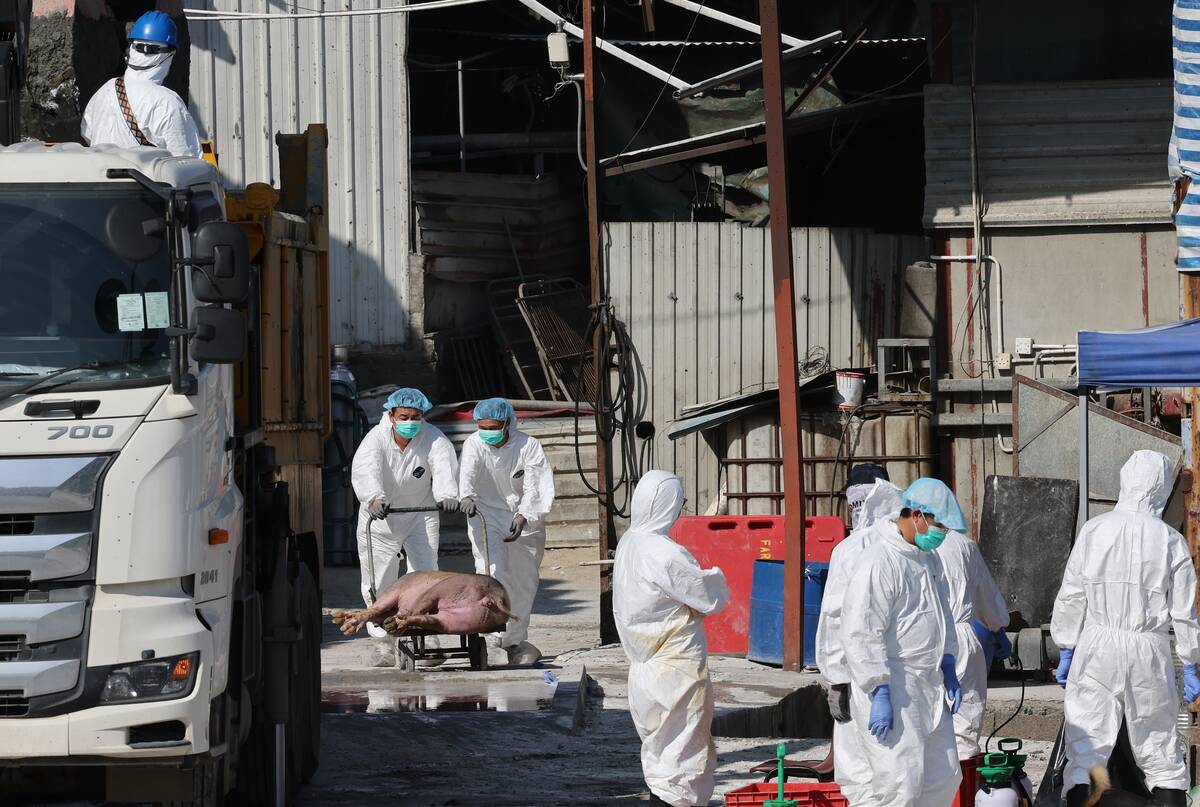RED DEER — Raising a better pig can be as simple as following instructions and using common sense.
Speaking at the Alberta Pork Congress, British swine expert John Gaad told producers that success with new production systems depends on accurate usage. Gaad discussed different techniques in use around the world
The Christensen system from Denmark was first on his list. Gaad said about 20 percent of Danish hog farms use a foster mother program where gilts rear as many as 40 piglets during one lactation.
Large gilts rear their own piglets for 16 to 18 days. The largest piglets are weaned and moved to a nursery. The gilt then takes on smaller piglets from other litters and continues nursing for 30 to 35 days.
Read Also

Mixed results on new African swine fever vaccine
The new African swine fever vaccine still has issues, but also gave researchers insight into how virus strain impacts protection against the deadly pig disease.
In this system, stock producers try to put on small pigs that were born about the same time as the natural litter, said Gaad. Only about two percent of the mothers attack the foster pigs, he said.
“The benefits are astonishing. We don’t quite know why it works so well.”
The average Danish sow weans 22 pigs per year but under the Christensen system, the rate increases to 27 pigs per sow, and mortality rates are lower.
But the gilts’ feed is critical, since it must give them more energy to produce ample amounts of milk. They need a liquid creep feed of up to five kg per day in scrupulously clean feeders to eliminate disease-causing bacteria.
The second production technique, called wet weaning, is a 30-year-old concept now back in vogue.
New studies on wet feeding for weaned pigs show that weight gains seven days after weaning are about one-third better than traditional programs, Gaad said. To make it work, producers must buy properly formulated food and use reliable dispensers.
Gaad says piglets shouldn’t be too light at weaning if producers are using this system. They should be even in size to reduce competition at the feeder.
Ishigami system
From Japan comes the Ishigami system. Pigs are raised in long, narrow, arch-shaped tents on earthen floors covered with deep sawdust. The sawdust is removed periodically, dried and reused.
The roofing is made of polyvinyl and supported by aluminum pipe curved into rafters that meet low brick walls with rails. The roof is pitched at about four metres to keep the building cooler. The ends can be opened by rolling up the vinyl. Tents can be placed back to back with a concrete pad between the two for the pigs to run outside.
This form of cheap housing works in Japan’s warmer climate but Gaad said he didn’t know how well it might serve in western Canada.















